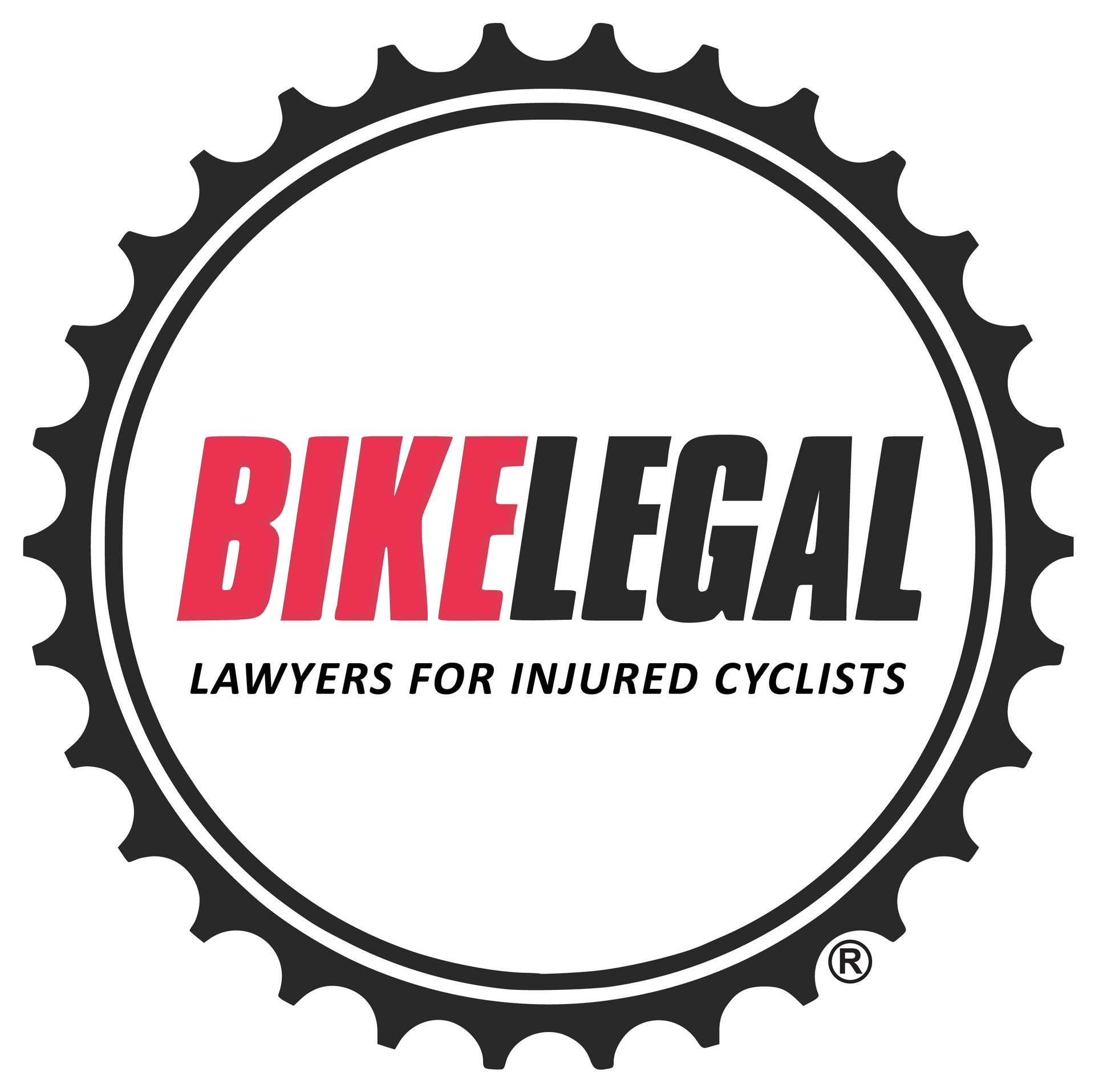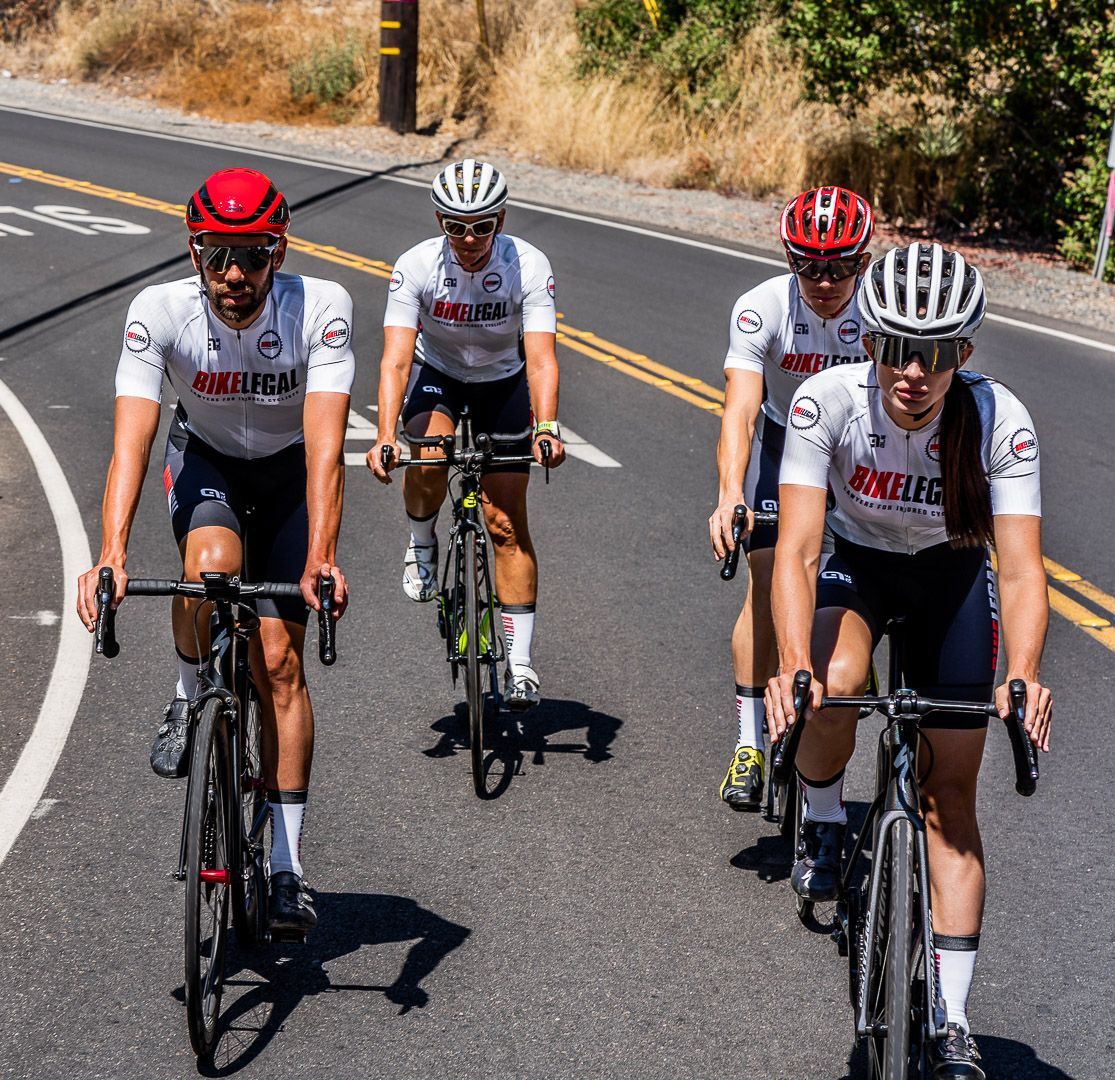The E-Bike Epidemic: Bridging the Regulatory Gaps in Orange County, CA
Follow us on
social media!
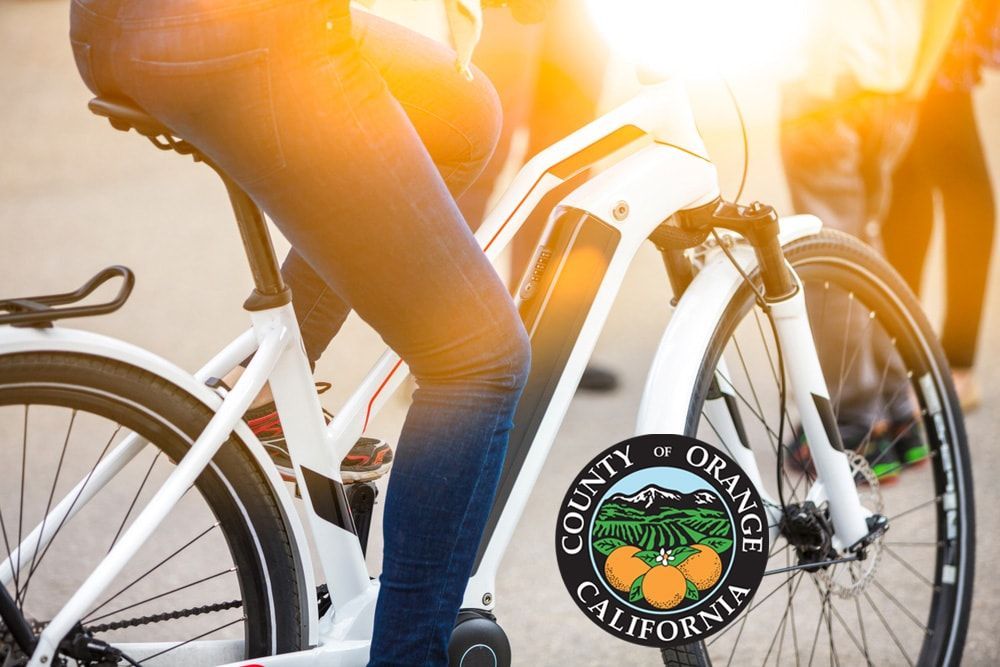
The e-bike revolution is here, and it's changing the way we cruise around Orange County. These electric wonders promise a convenient and eco-friendly ride, but with a surge in popularity, safety concerns are buzzing louder than ever.
Are we ready for this two-wheeled takeover? Let's investigate the e-bike epidemic in Orange County, uncover the regulatory gaps, and explore how we can keep our streets safe for everyone.
- A closer look at the growing popularity of e-bikes
- The current state of e-bike regulations (or lack thereof)
- Crucial recommendations for safer e-bike policies
- Real-life stories of e-bike incidents
- How Bike Legal is leading the charge in protecting cyclists' rights
If you've ever wondered about the future of electric bikes in Orange County, you're in the right place. So buckle up (or should we say, helmet up?) for this electrifying ride.
Brief Summary:
- E-bike Boom, Safety Bust: E-bikes are taking over Orange County, but a lack of clear regulations and enforcement is leading to a surge in accidents, especially among young riders.
- Grand Jury Investigation: The Orange County Grand Jury (OCGJ) has stepped in, exposing the chaotic state of e-bike regulations and calling for urgent action.
- Regulatory Wild West: Each city in Orange County has its own set of rules (or lack thereof), leading to confusion and dangerous riding practices.
- Data Deficit: Many cities don't even track e-bike accidents, making it impossible to grasp the true extent of the problem.
- Education Gap: Most schools aren't teaching e-bike safety, leaving young riders unprepared for the risks.
- Solutions for a Safer Future: The OCGJ recommends unified regulations, better data tracking, mandatory education, increased enforcement, and public awareness campaigns.
- Kids at Risk: Young riders are particularly vulnerable to accidents, often due to a lack of experience, knowledge, and parental supervision.
- Speed Limiters Removed: Modified e-bikes can reach dangerous speeds, posing a significant risk to riders and others.
- California Lags Behind: Compared to states like Utah, California's e-bike laws are weak and inconsistent.
- Bike Legal Can Help: If you've been injured in an e-bike accident, Bike Legal is here to fight for your rights.
E-Bikes in the OC: Spiraling Out of Control
E-bikes are fast, convenient, and a whole lot of fun. But as more and more people hop on the e-bike bandwagon, we're starting to see some... interesting riding styles. We've all seen it: groups of kids cruising down sidewalks, helmetless, sometimes even doubling (or tripling) up on a single bike.
This isn't just a minor annoyance; it's a major safety hazard. In fact, e-bike accidents have been skyrocketing in Orange County, and the victims are often the youngest riders.
So, where are the rules? The short answer is: they're all over the place.
A patchwork of regulations

The OCGJ's report reveals a wild west of e-bike regulations in Orange County. Each of the 34 cities has its own set of (sometimes nonexistent) rules. Some cities have embraced e-bikes and created detailed guidelines, while others haven't even bothered to address them. This chaotic regulatory landscape leaves everyone scratching their heads.
This lack of consistency leads to dangerous situations. E-bike riders might follow the rules in one city, only to find themselves breaking the law in another. Even law enforcement struggles to keep up with the ever-changing (and sometimes conflicting) regulations.
And let's not forget the biggest victims of this regulatory confusion: our kids. Many young riders simply don't know the rules, and even if they do, there's often no one around to enforce them.
What's the solution?
The OCGJ's report makes it clear: we need a unified approach to electric assisted bicycle regulation in Orange County. This means establishing clear, consistent rules that apply across all 34 cities. It also means educating riders, especially young ones, about safe riding practices and the importance of following traffic laws.
And let's not forget about enforcement. We need law enforcement officers who are knowledgeable about electric bike laws and equipped to enforce them fairly and consistently.
In the meantime, it's up to us to be responsible e-bike riders. That means wearing a helmet, following traffic laws, and being aware of our surroundings. It also means educating our kids about electric bicycles safety and setting a good example for them to follow.
Keep in mind that e-bikes can be a fun and sustainable mode of transportation, but only if we use them responsibly. By working together, we can create a safer and more enjoyable e-bike experience for everyone in Orange County.
E-Bikes: Are They a Sustainable Solution or a Safety Hazard?
While the thrill of cruising on an e-bike is undeniable, it's important to weigh the pros and cons. Let's break it down:
Why e-bikes are all the rage
- Convenient commuting: Say goodbye to traffic jams and parking hassles. E-bikes offer a convenient way to zip to work, school, or your favorite coffee shop.
- Easy on the wallet: Compared to cars (and their ever-rising gas prices), e-bikes are a budget-friendly option. You'll save on gas, parking, and even gym memberships (hello, workout on wheels).
- Eco-friendly: E-bikes produce zero emissions, making them a much greener choice than gas-guzzling cars. You'll be doing your part to protect our planet, one ride at a time.
The dark side of e-bikes: Safety concerns
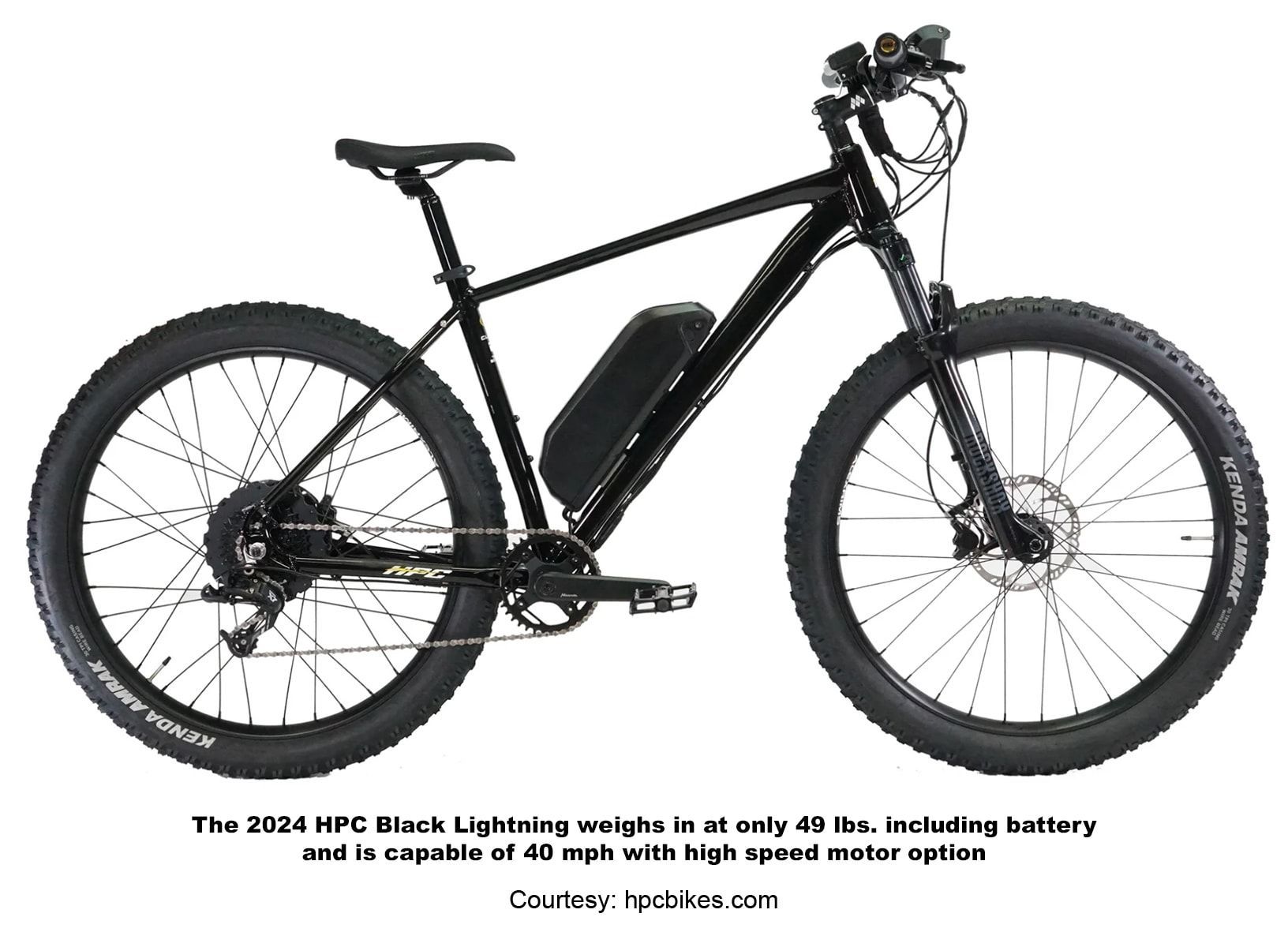
- Speed demons: E-bikes can reach speeds of up to 28 mph, which is significantly faster than traditional bikes. This speed, combined with the quiet hum of the motor, can catch pedestrians and drivers off guard. Even more concerning are modified E-bikes, which can exceed these speeds, reaching 40 mph or more. The higher speeds of modified E-bikes drastically increase the risk of accidents and the severity of injuries. The combination of high speed and silent operation poses a significant danger, making it difficult for others on the road to anticipate and react to an approaching E-bike.
- Accidents waiting to happen: According to the OCGJ's report, e-bike accidents are on the rise in Orange County. And the injuries sustained in these accidents tend to be more severe than those in regular bike accidents.
- Undetected danger: Many cities in Orange County don't even track e-bike accidents, making it difficult to gauge the true extent of the problem.
Where are the rules?
The OCGJ's investigation uncovered a patchwork of electric motor bike regulations across Orange County. Some cities have detailed rules in place, while others have virtually none. This lack of consistency creates confusion and increases the risk of accidents.
A low speed electric bicycles rider might follow the rules in one city, only to unknowingly break them in the next. It's like a game of regulatory roulette, and the stakes are high.
The need for consistent rules
The OCGJ is calling for a standardized set of electric bike regulations across all of Orange County. This would include clear rules on where e-bikes can be ridden, speed limits, helmet requirements, and age restrictions. It would also mean educating riders and drivers about the rules of the road and enforcing them consistently.
This isn't just about cracking down on reckless electric bike riders; it's about creating a safe and enjoyable environment for everyone. With clear and consistent regulations, we can ensure that e-bikes are a positive addition to our communities.
E-Bikes: From Humble Beginnings to High-Speed Havoc
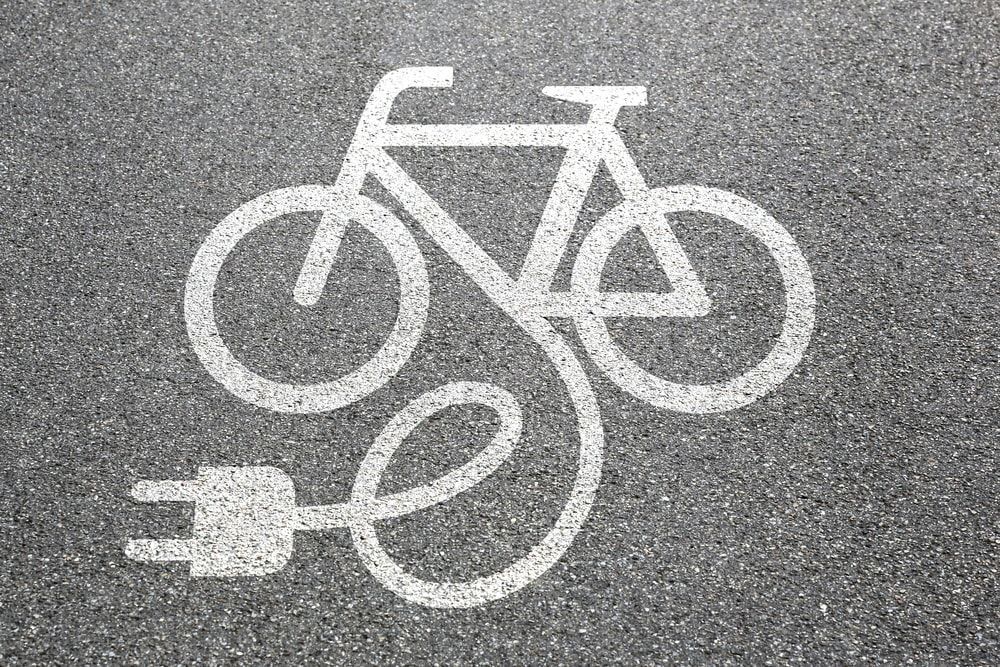
Believe it or not, e-bikes aren't a newfangled invention. They've been around in some form since the late 1800s. But it wasn't until the 1990s that the modern e-bike, with its fully operable pedals-assist technology and rechargeable batteries, started to gain traction.
Today, e-bikes come in three distinct classes, each with its own speed limit and features:
- Class 1: Pedal-assist only, with a top speed of 20 mph. These motor-driven cycles provide a boost when you're pedaling, but stop assisting once you hit 20 mph. This low-speed electric bicycle is great for leisurely rides and commuting.
- Class 2: Throttle-powered, with a top speed of 20 mph. These electric motorized bicycles have a throttle that propels the motorized bicycle without pedaling. They're ideal for those who want a more relaxed ride or need a little extra help on hills.
- Class 3: Pedal-assist with a top speed of 28 mph. These are the speed demons of the e-bike world. They're designed for experienced riders who want to cover longer distances quickly.
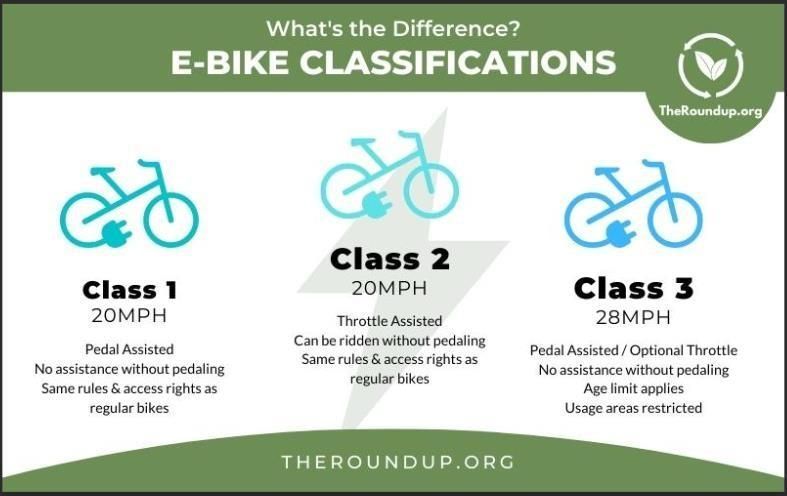
A boom with a backlash
E-bikes have exploded in popularity in recent years, with sales skyrocketing a whopping 145% between 2020 and 2021. But this rapid growth has also brought a wave of new problems.
One of the biggest issues is that many riders, particularly young ones, simply don't know the rules of the road. They might ride on sidewalks, blow through stop signs, or even ride against traffic. And with e-bikes capable of reaching speeds of 28 mph or more (especially if they've been modified), the consequences of these reckless behaviors can be devastating.
The OCGJ's report highlights some of the most common issues associated with e-bikes:
- Sidewalk riding: This is a major hazard for pedestrians, especially seniors and children who might not be able to react quickly to an oncoming e-bike.
- Speeding: When e-bikes exceed their designed speed limits, they become much more difficult to control, increasing the risk of accidents.
- Collisions: E-bike collisions with pedestrians, cyclists, and cars are on the rise, often resulting in serious injuries.
- Unauthorized modifications: Some riders modify their electric assisted bicycles to remove speed limiters, essentially turning them into electric motorcycles. This is not only illegal but also incredibly dangerous.
The hidden toll: E-bike injuries
The OCGJ's report reveals a disturbing trend: e-bike accidents are often more severe than regular bike accidents. This is due in part to the higher speeds involved, but also to the fact that many riders don't wear helmets or other protective gear.
Even more concerning is the lack of data on e-bike injuries. Many cities in Orange County don't even track e-bike accidents, making it difficult to understand the full extent of the problem.
This lack of awareness among city officials is a major obstacle to developing effective safety regulations and education programs. Without accurate data, it's impossible to know where to focus our efforts or measure our progress.
Why the Grand Jury Stepped In: A Regulatory Wake-Up Call
The meteoric rise in e-bike popularity hasn't gone unnoticed. While e-bike sales have soared by a staggering 145% in recent years, the rulebook hasn't kept pace. It's like a rocket without a guidance system – exciting, but potentially disastrous.
The Orange County Grand Jury didn't launch this investigation for kicks. They heard the growing chorus of public complaints and witnessed firsthand the safety hazards unfolding on our streets. From sidewalk near-misses to high-speed crashes, the risks were too glaring to ignore.
The OCGJ's mission was crystal clear:
- Expose the regulatory void: Highlight the lack of consistent, city-specific regulations for e-bikes.
- Raise awareness: Educate the public about the potential dangers of unregulated e-bike use.
- Push for change: Advocate for the creation of clear, enforceable "rules of the road" for e-bikes in every city.
This isn't just about playing catch-up; it's about preventing future tragedies. As e-bike usage continues to climb, the need for regulation and education becomes even more critical. It's time for Orange County to take the reins and steer this e-bike revolution in a safer direction.
How the Grand Jury Cracked the Case: Digging into the Data
The OCGJ didn't just sit around theorizing about the e-bike situation. They rolled up their sleeves and hit the streets (and the books) to gather real-world data.
Here's how they got their hands dirty:
- Face-to-face interviews: They sat down with folks on the front lines of the e-bike boom, including bike shop owners, Orange County Transportation Authority (OCTA) reps, Orange County Sheriff's Department (OCSD) officials, and even community groups. These conversations provided valuable insights into the challenges and opportunities presented by e-bikes.
- City council crash course: The OCGJ attended (and watched online) numerous city council meetings, getting a firsthand look at how local governments are (or aren't) addressing the e-bike issue. They even sat in on an e-bike training session to see what new riders are (or aren't) being taught.
- Legislative deep dive: The OCGJ combed through state legislation, both passed and pending, to understand the broader legal landscape surrounding e-bikes.
- Boots on the ground: They hit the pavement, observing e-bike riders in action. Where were they riding? How fast? Were they wearing helmets? This firsthand observation provided crucial context for the report's findings.
- Mayoral survey: The OCGJ sent a comprehensive survey to the mayors of all 34 Orange County cities. The responses, while varied, painted a revealing picture of the inconsistencies and gaps in local e-bike regulations.
This multi-pronged approach ensured that the OCGJ's report was grounded in reality, not just speculation. It's a testament to their commitment to getting the facts straight and providing a clear-eyed assessment of the e-bike situation in Orange County.
E-Bike Chaos: A Tale of 34 Cities
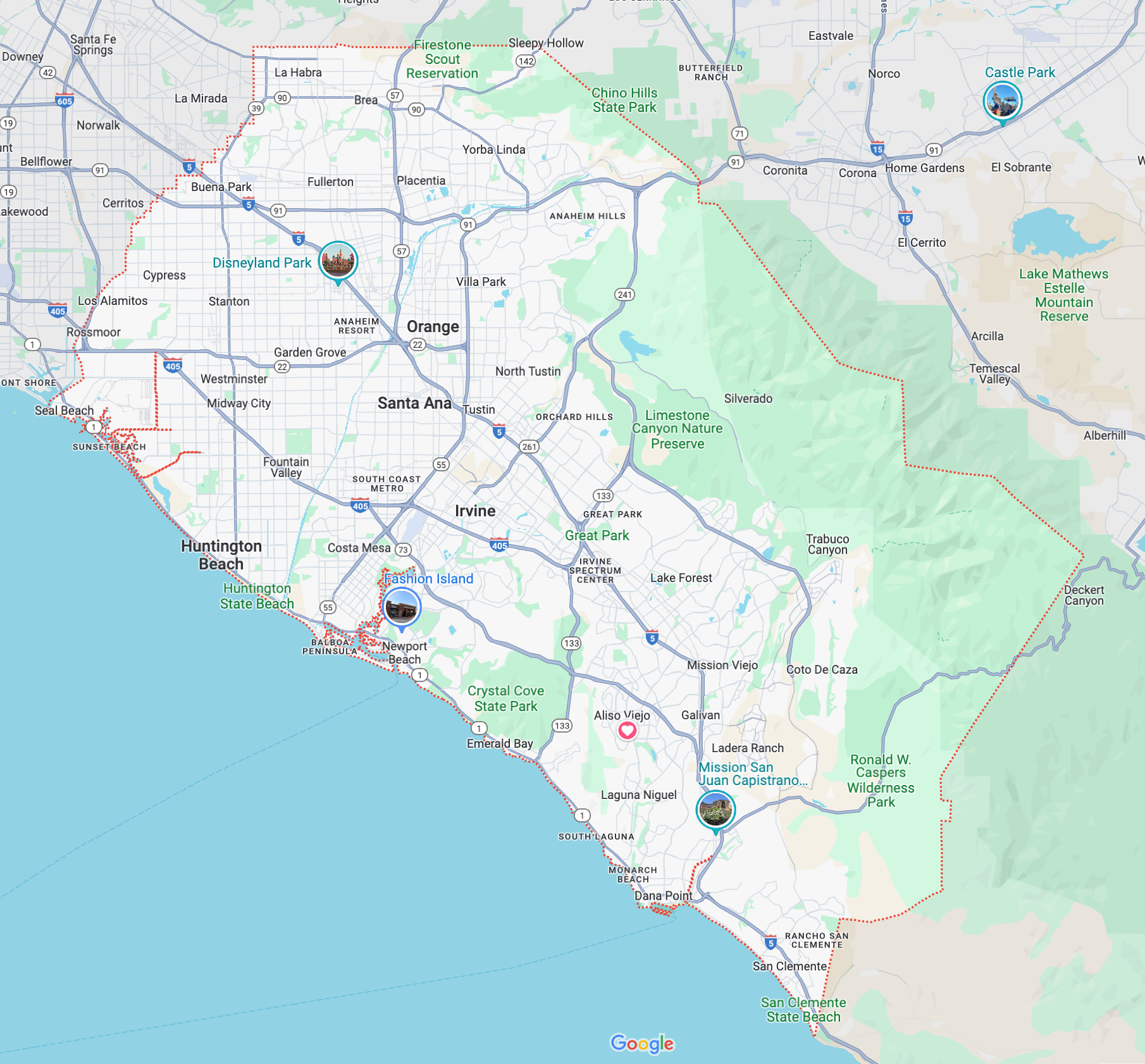
The OCGJ's investigation uncovered a regulatory maze as diverse as Orange County itself. Each city seems to be playing by its own set of (sometimes nonexistent) rules.
City policies: A game of regulatory roulette
Some cities, like Irvine, have taken a proactive approach, implementing strict e-bike regulations, education programs, and enforcement measures. Others have barely scratched the surface, leaving riders and law enforcement in a state of confusion.
This lack of uniformity creates a dangerous situation. A rider who's following the rules in one city might unknowingly break them in the next. This patchwork of regulations also makes it difficult for law enforcement to enforce the rules consistently.
Speeding, helmets, and wrong-way riding: A recipe for disaster
The OCGJ's survey of city mayors revealed some alarming trends:
- Speeding: Shockingly, none of the surveyed cities had posted speed limits for e-bikes, even though they can reach speeds of up to 28 mph.
- Helmets: Helmet use is often optional, even for younger riders, despite the increased risk of serious injury in e-bike accidents.
- Wrong-way riding: Some cities actually allow e-bikes to ride against traffic, a practice that the OCTA (Orange County Transportation Authority) itself deems "inherently dangerous."
OCTA and OCSD: Trying to make sense of the mess
The OCTA has taken on the Herculean task of compiling a comprehensive list of e-bike regulations for each city. However, this list highlights the vast inconsistencies in rules across the county.
The OCSD (Orange County Sheriff's Department) is responsible for enforcing e-bike laws in unincorporated areas. However, they often lack the resources and training to effectively address the growing e-bike problem.
Schools and Communities
The OCGJ found that most schools in Orange County are not actively involved in e-bike safety education. This leaves young riders without the knowledge and skills they need to stay safe on the roads.
Community groups are also sounding the alarm, expressing concerns about reckless riding, lack of enforcement, and the need for better education. They're calling for action to protect pedestrians, cyclists, and e-bike riders alike.
The Verdict: A regulatory overhaul is overdue
The OCGJ's investigation paints a clear picture: the current e-bike situation in Orange County is a recipe for disaster. The lack of consistent regulations, enforcement, and education is putting everyone at risk.
It's time for our cities to step up and take responsibility for this issue. We need clear, consistent rules that apply across the county, along with robust education and enforcement efforts. Only then can we ensure that e-bikes are a safe and enjoyable mode of transportation for everyone.
The OCGJ's Verdict: Orange County's E-Bike Regulations Are Falling Short
After weeks of digging into the data and talking to experts, the OCGJ came to three stark conclusions:
A regulatory free-for-all
The vast majority of Orange County cities are winging it when it comes to e-bike regulations. Sure, the California Vehicle Code provides some basic guidelines, but it's up to each city to fill in the gaps. And let's just say, some cities are doing a much better job than others.
This lack of uniform ordinances is a recipe for confusion and chaos. Riders don't know what to expect from one city to the next, and law enforcement struggles to enforce a patchwork of rules that seem to change with every city limit sign.
Where are the numbers?
Electric motor powered bike accidents are happening, and they're often serious. But many cities aren't even tracking these incidents, making it impossible to grasp the true scope of the problem. Without accurate data, it's like trying to solve a puzzle with half the pieces missing.
How can we expect to create effective safety measures if we don't even know how many accidents are happening, where they're happening, and who's getting hurt?
Education: Hit or miss
Some cities are taking e-bike education seriously, offering classes, workshops, and even "rodeos" to teach riders the rules of the road. But these efforts are sporadic and often optional. In many cities, riders are left to fend for themselves, relying on word-of-mouth or outdated information.
This lack of standardized education is a major problem, especially for young riders who may not have the experience or knowledge to navigate the complex world of e-bike safety.
The OCGJ's findings are a wake-up call for Orange County. We can't afford to ignore the growing e-bike problem any longer. We need to act now to create a safer and more regulated environment for everyone.
The OCGJ's Action Plan: A Roadmap for Safer E-Biking in OC
The Orange County Grand Jury didn't just point out the problems; they offered concrete solutions to get Orange County's e-bike situation under control. Here's their three-pronged plan:
Clear rules for all
By December 1, 2024, every city in Orange County needs to establish crystal-clear e-bike regulations. No more wishy-washy guidelines or outdated ordinances. We're talking about comprehensive rules that cover:
- Speed limits: How fast can you go on different types of roads and paths?
- Helmet requirements: Who needs to wear a helmet, and when?
- Riding zones: Where can you ride (and where can't you)?
- Parking: Where can you park your e-bike safely and legally?
This isn't about restricting fun; it's about preventing accidents. When everyone knows the rules, we can all ride with confidence, knowing what to expect from ourselves and others.
Track it to tackle it
E-bike accidents are happening, but we don't have a clear picture of how often or how severe they are. By December 1, 2024, every city needs to implement a robust tracking system for e-bike incidents. This means:
- Recording every accident: No matter how minor, every e-bike incident should be documented.
- Gathering key details: This includes the type of e-bike involved, the speed, location, and any injuries sustained.
- Sharing data: This information should be shared with other cities and relevant agencies so we can identify trends and develop targeted safety measures.
With accurate data, we can finally get a handle on the e-bike safety problem and make informed decisions about how to address it.
Education is key
By December 1, 2024, Orange County needs to develop and promote comprehensive e-bike safety education programs. These programs should target riders of all ages and skill levels, covering topics like:
- Traffic laws: What are the rules of the road for e-bikes?
- Safe riding practices: How can you ride defensively and avoid accidents?
- Helmet use: Why is it so important to wear a helmet, and how do you choose the right one?
- E-bike maintenance: How can you keep your e-bike in tip-top shape to prevent mechanical failures?
Education is the key to empowering riders and preventing accidents. By giving riders the knowledge and skills they need, we can create a safer and more enjoyable e-bike culture in Orange County.
The Clock is Ticking: City Councils on Notice
The OCGJ isn't letting city councils off the hook. Their report doesn't just highlight problems; it demands action.
Specifically, the Grand Jury is requiring the following cities to respond to their findings and recommendations within 90 days:
- Aliso Viejo
- Dana Point
- Laguna Beach
- Laguna Niguel
- Lake Forest
- Mission Viejo
- Rancho Santa Margarita
- San Clemente
- San Juan Capistrano
- Stanton
These cities were singled out for their lack of e-bike regulations or their failure to adequately address the issue. The OCGJ is essentially saying, "Time's up. Get your act together."
This is a big deal. It means these cities can't just sweep the e-bike problem under the rug. They need to take a hard look at their current (or nonexistent) policies and come up with a plan to address the safety concerns raised in the report.
Will they rise to the challenge and create a safer environment for e-bike riders and the community at large? Or will they continue to kick the can down the road?
We'll be watching closely, and we'll keep you updated on their responses. In the meantime, if you live in one of these cities, let your voice be heard. Contact your city council members and demand action on e-bike safety.
E-Bikes and Minors: A Recipe for Disaster
The OCGJ report paints a particularly alarming picture when it comes to underage e-bike riders. It's like giving a teenager the keys to a Ferrari without a driver's license.
Kids gone wild
In Orange County, it's not uncommon to see groups of kids, often preteens and teens, tearing through neighborhoods on e-bikes. Many ride without helmets, perform dangerous stunts, and even pile multiple passengers onto a single bike.
This isn't just harmless fun. It's a serious public safety issue. Young riders are more likely to be involved in accidents, and they're also more likely to suffer serious injuries when those accidents occur.
A lack of understanding (and enforcement)
The problem is twofold:
- Ignorance: Many young riders simply don't know the rules of the road. They may not understand traffic signals, right-of-way laws, or the dangers of riding on sidewalks or against traffic.
- Lack of enforcement: Even when there are rules in place, they're often not enforced, especially when it comes to underage riders. This sends a message that it's okay to flout the law, putting both riders and the public at risk.
The parental factor
Parents play a crucial role in keeping their kids safe on e-bikes. This means:
- Educating themselves: Parents need to understand the laws and regulations surrounding e-bikes, as well as the potential dangers.
- Educating their kids: Talk to your kids about the rules of the road, the importance of wearing a helmet, and the risks of reckless riding.
- Setting a good example: If you ride an e-bike, model safe riding behavior for your kids.
- Supervising young riders: Make sure young children are supervised when riding e-bikes, and consider enrolling them in a safety course.
Remember, e-bikes aren't toys. They're powerful motor vehicles that require responsibility and respect for the law.
E-Bike hitchhikers: A dangerous trend
Riding double (or triple) on an e-bike might seem like harmless fun, but it's a recipe for disaster. The OCGJ report highlights this growing problem, especially among young riders who often pile onto a single e-bike, sometimes even carrying small children.
Think about it: most e-bikes aren't designed to carry multiple passengers. This extra weight can affect the bike's balance and handling, making it harder to control, especially at high speeds. And in the event of an accident, the risk of serious injury is multiplied for everyone involved.
Kids in the crossfire: The dangers of riding in traffic lanes
One of the most concerning trends is kids riding e-bikes in traffic lanes alongside cars, trucks, and buses. This is a terrifying prospect for any parent. Young riders may lack the experience and awareness to navigate busy roads safely, and they're no match for larger, faster vehicles.
The OCGJ report emphasizes the need for clear regulations regarding where e-bikes can be ridden. But even with clear rules, it's ultimately up to parents to ensure their children are riding in safe environments.
Parents: The first line of defense
Parents play a crucial role in educating their children about e-bike safety. This means:
- Teaching the rules of the road: Explain traffic laws, right-of-way rules, and the importance of staying alert and aware of their surroundings.
- Enforcing helmet use: Make sure your child always wears a properly fitted helmet when riding an e-bike.
- Supervising young riders: Don't let young children ride unsupervised, especially in traffic.
- Choosing age-appropriate e-bikes: Class 2 and 3 e-bikes, with their higher speeds, may not be suitable for younger riders.
- Setting a good example: If you ride an e-bike, always model safe riding behavior.
By taking these steps, parents can help ensure their children enjoy the fun and freedom of e-bikes without putting themselves or others at risk.
The E-Bike Balancing Act: Weighing the Pros and Cons
E-bikes have their fair share of pros and cons. Let's take a closer look:
The upside of e-bikes
- Fun and convenient: E-bikes are a blast to ride and offer a convenient way to get around, especially for short trips.
- Health benefits: Riding an e-bike can be a great way to get exercise and improve fitness.
- Eco-friendly: E-bikes produce zero emissions, making them a sustainable transportation option.
- Cost-effective: Compared to cars, e-bikes are much cheaper to operate and maintain.
The downside of e-bikes
- Safety risks: E-bikes can reach high speeds and are involved in a growing number of accidents, especially among young riders.
- Lack of regulation: Inconsistent or nonexistent regulations can lead to confusion and unsafe riding practices.
- Infrastructure challenges: Many cities lack the infrastructure (e.g., bike lanes) to accommodate e-bikes safely.
- Theft: E-bikes can be attractive targets for thieves.
Helmet Laws: Protecting Your Noggin
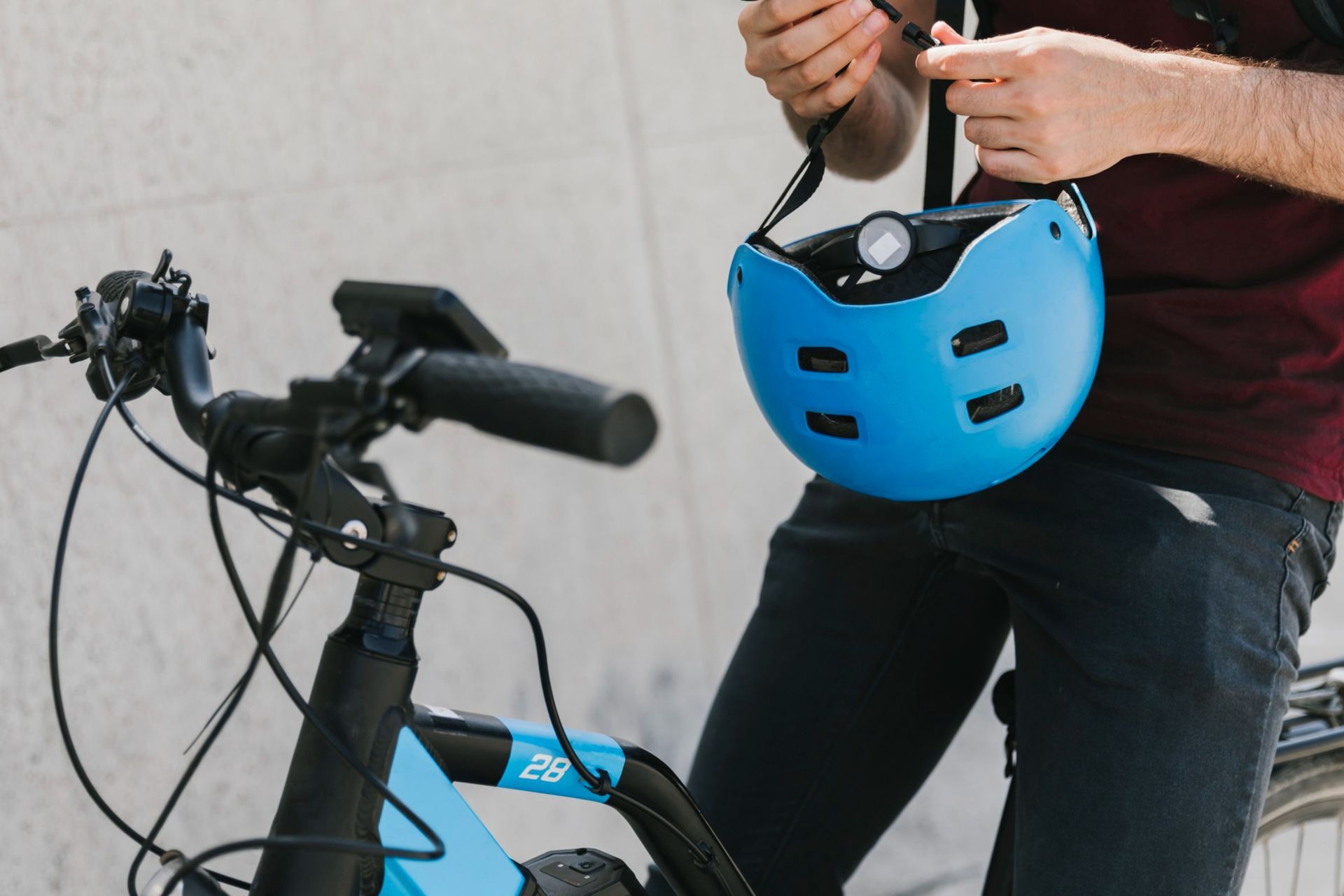
In California, all e-bike riders under the age of 18 are required to wear a helmet. However, for adults, helmet use is only recommended, not required.
This is where the OCGJ's call for stricter regulations comes into play. They recommend making helmet use mandatory for all e-bike riders, regardless of age. This would significantly reduce the risk of head injuries in accidents, which can be life-altering or even fatal.
Remember, a helmet is the single most important piece of safety gear you can wear on an e-bike. It's a small price to pay for peace of mind and protection.
E-Bike Accidents in Orange County: A Grim Reality
The surge in e-bike popularity has brought with it a chilling spike in accidents and injuries, particularly in Orange County. The numbers tell a sobering story:
- Orange County: The epicenter of e-bike injuries: A staggering 41% of all e-bike injuries in California occur in Orange County, even though the county only accounts for 8% of the state's population. That's a disproportionately high number, highlighting the severity of the issue in our own backyard.
- 500% increase in e-bike accidents: Providence Mission Hospital in Mission Viejo reported a jaw-dropping 500% increase in e-bike accidents between 2020 and 2021. That's not a typo. E-bike injuries are surging at an alarming rate.
- Children at risk: The number of children injured in e-bike accidents in Orange County doubled between 2020 and 2021. This is particularly concerning, as young riders are more vulnerable to serious injuries due to their smaller size and developing bodies.
These statistics are more than just numbers; they represent real people suffering real consequences. Broken bones, head trauma, internal injuries, and even fatalities are all too common in e-bike accidents.
And the problem isn't limited to Orange County. Across California, e-bike injuries are on the rise, prompting calls for stricter regulations and better education.
But in Orange County, the problem is especially acute. Our lack of consistent regulations, coupled with a surge in underage riders, has created a perfect storm for accidents and injuries. It's time to face the facts: e-bikes aren't just a passing fad; they're a permanent fixture on our roads. And if we don't act now to address the safety concerns, we'll continue to see these devastating statistics climb.
E-Bike Laws in Orange County: A Patchwork of Confusion
The OCGJ's report highlights the vast discrepancies in e-bike laws across Orange County's 34 cities. Here's a glimpse of the current (and often lacking) regulations:
- Unincorporated areas: E-bikes must have a label indicating their class, top assisted speed, and motor wattage. Helmets are required for riders under 18, and carrying passengers is only allowed with a permanent extra seat or child safety seat. Speed limits vary depending on the road or trail.
- Incorporated cities: Each city has its own set of rules, ranging from detailed regulations to virtually none at all. Some cities allow e-bikes on sidewalks, while others prohibit it. Some have speed limits, while others don't.
California vs. Utah: A Regulatory Showdown
California, despite being a hub for e-bike innovation, lags behind other states when it comes to e-bike regulations. Take Utah, for example. The Beehive State has clear, comprehensive laws that cover everything from helmet requirements to speed limits to where e-bikes can be ridden.
Utah also takes enforcement seriously, with dedicated resources and training for law enforcement officers. This proactive approach has helped to create a safer and more predictable e-bike environment.
Solutions for a Safer E-Bike Future
So, what can we do to improve e-bike safety in Orange County and beyond? The OCGJ's report offers several recommendations:
- Unified regulations: All cities in Orange County should adopt a standardized set of e-bike regulations, including clear rules on speed limits, helmet use, and riding locations.
- Robust tracking: We need accurate data on e-bike accidents to identify trends and develop targeted safety measures.
- Mandatory education: All e-bike riders, especially minors, should be required to complete a safety course before hitting the streets.
- Increased enforcement: Law enforcement agencies need the resources and training to effectively enforce e-bike laws.
- Public awareness campaigns: We need to educate the public about the risks of reckless e-bike riding and the importance of following the rules.
By implementing these recommendations, we can transform Orange County from an e-bike wild west into a safe and enjoyable environment for all.
E-Bikes: Evolving the Ride, Ensuring Safety
Orange County's e-bike boom is a thrilling ride, but it's clear we need to pump the brakes on safety concerns. By understanding the issues, pushing for change, and educating ourselves and our kids, we can make sure this electric revolution doesn't leave a trail of injuries in its wake.
Here's a quick recap of what we've learned:
- E-bikes are here to stay, but regulation hasn't kept pace with their rapid growth.
- The lack of consistent rules, enforcement, and education is putting everyone at risk, especially kids.
- The Orange County Grand Jury's report is a wake-up call, demanding action from our cities.
- We need clear, consistent regulations, better data tracking, and mandatory safety education.
Bike Legal Advocates for ALL Cyclists
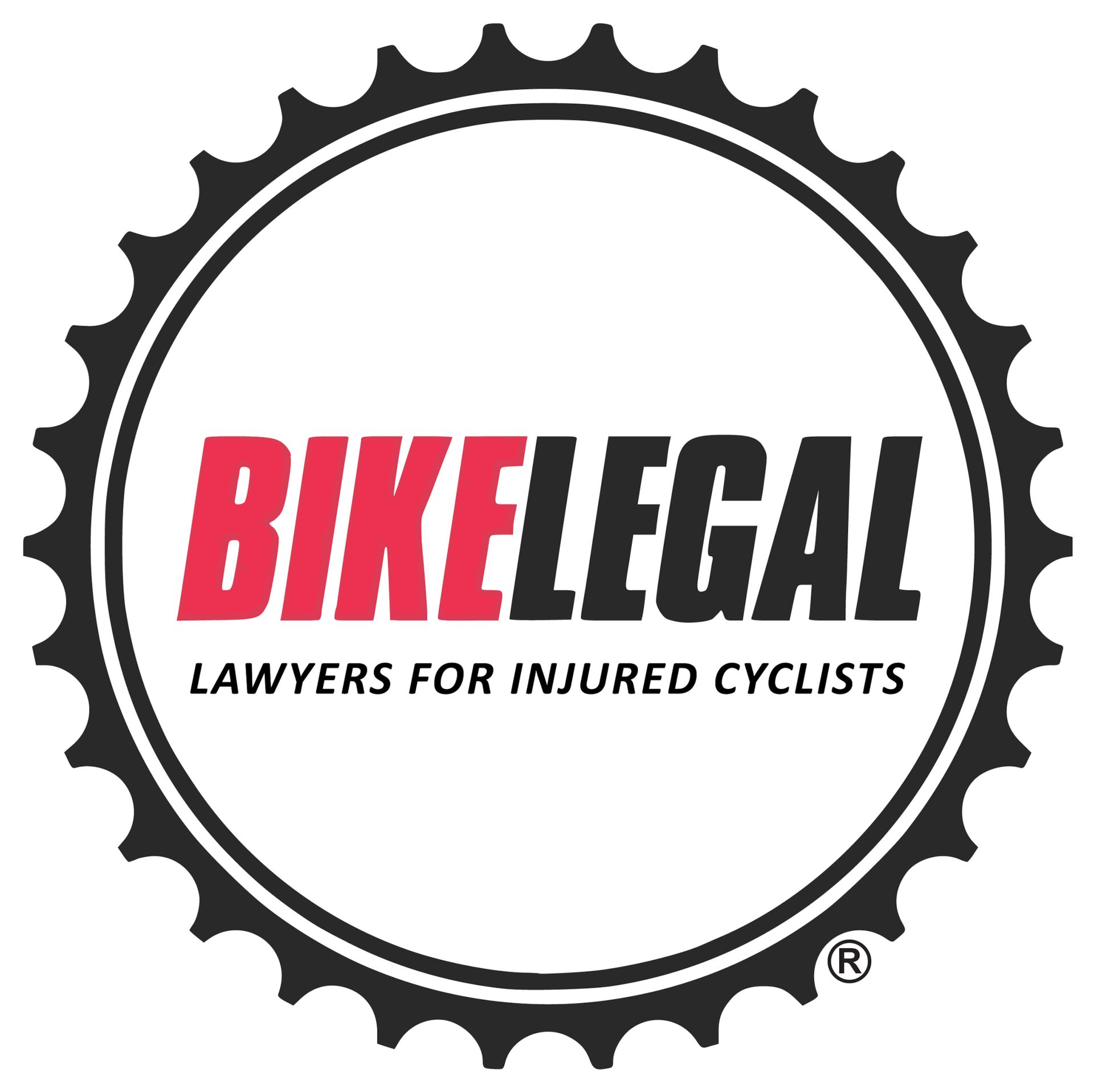
At Bike Legal, we're committed to protecting the rights of cyclists, including e-bike riders. We understand the unique challenges faced by e-bike riders in Orange County, and we're here to help. If you or someone you know has been injured in an e-bike accident, don't hesitate to contact us for a free consultation.
